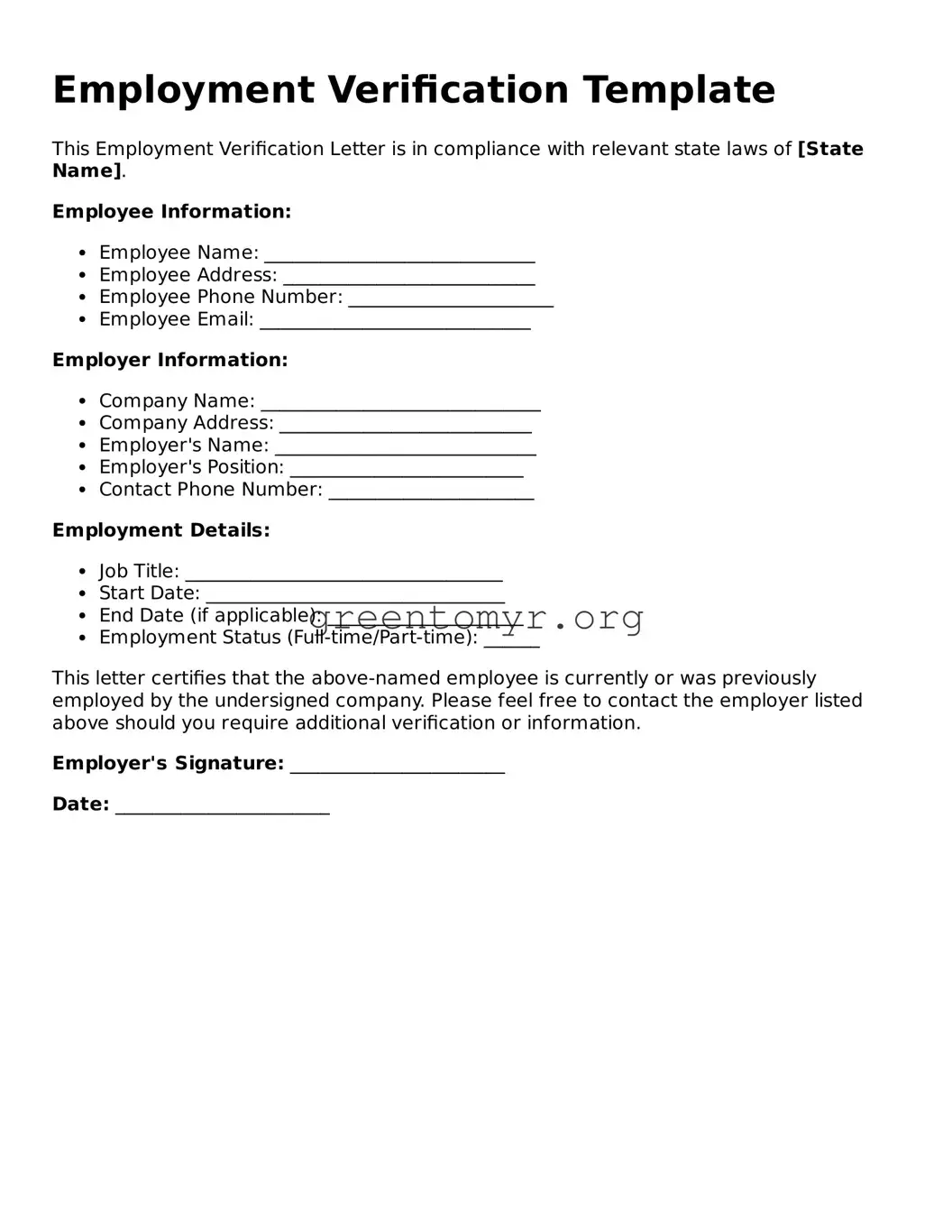Filling out an Employment Verification form can seem straightforward, but many people encounter common mistakes that can lead to complications. One frequent error is providing inaccurate or outdated contact information for previous employers. If the contact cannot be reached or does not recognize the applicant, it can cause delays in the verification process.
Another mistake is omitting important details about previous job titles or duties. Applicants often write vague job descriptions. This lack of specificity may raise questions for the employer seeking to understand the applicant's experience.
Many individuals also forget to include the dates of employment. This crucial information helps verify a person's work history. Without precise dates, it becomes challenging for employers to confirm a candidate’s qualifications.
Some applicants misinterpret the form’s requirements and submit incomplete sections. Leaving blank spaces or unanswered questions can result in an immediate rejection. It’s essential to fill out every section completely to avoid this pitfall.
Failing to verify the spelling of company names is another common oversight. If a company’s name is misspelled, it could create confusion or lead to an inability to reach the employer for confirmation.
Providing misleading information is a critical mistake. It is crucial to be honest and accurate. Even small exaggerations can have serious consequences, undermining the applicant's credibility.
In some cases, people forget to sign or date the form. This oversight can render the document invalid, resulting in further delays during the verification process.
A lack of attention to detail regarding formatting can lead to issues. Submitting the form in an unprofessional manner, such as an unorganized layout or inconsistent font styles, reflects poorly on the applicant.
Lastly, not reading the instructions carefully can result in misunderstandings. Each Employment Verification form may have specific requirements. Carefully reviewing the instructions before filling it out can help prevent mistakes and ensure a smoother process.
